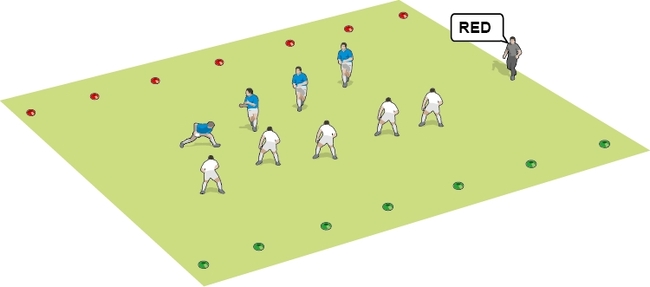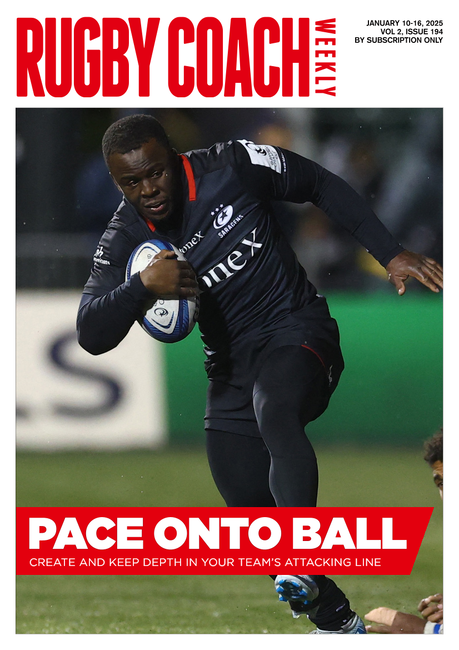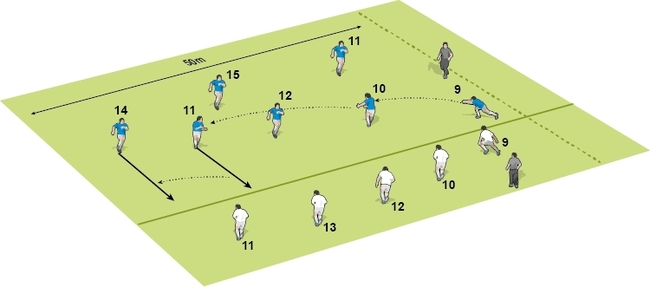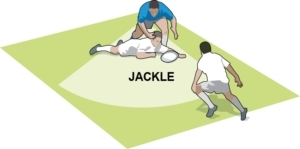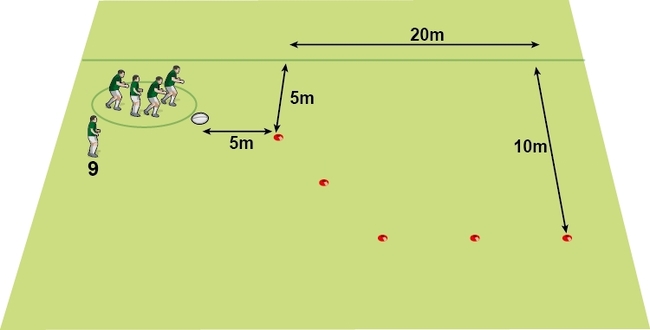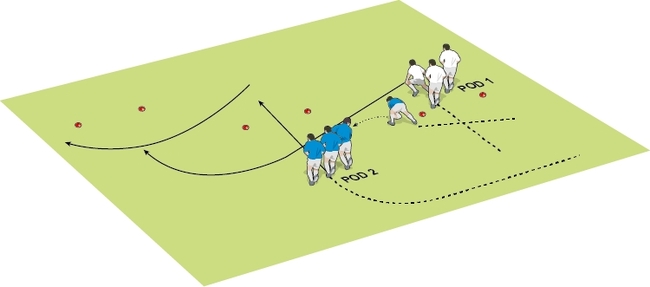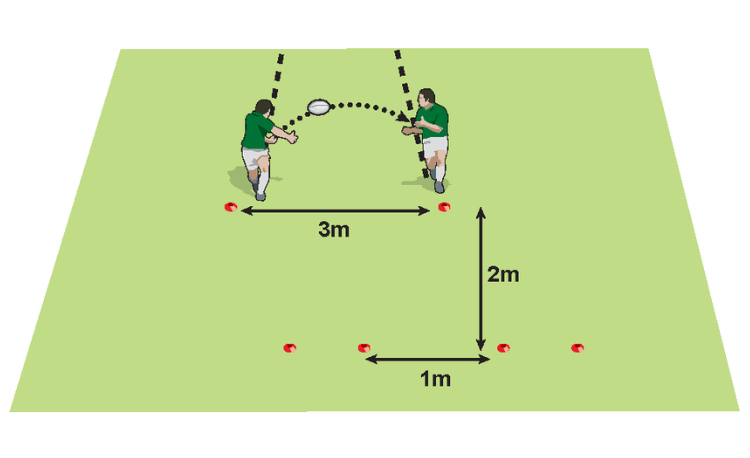Train to transition fast to exploit weaknesses
Tacticsby Tom Brocklebank
Transitions are great opportunities to score or win the ball back. They’re also a dangerous moment to lose the ball.
By supporting your players to better understand transitions, you can help your team be more effective when winning the ball back: increasing their chances to score; and more effective when losing the ball: increasing their chances of winning the ball back and reducing the chances of conceding.
WHAT IS A TRANSITION?
A transition is the moment after a turnover of possession. An attacking team become the defending team (defensive transition) and vice versa (attacking transition).
This is the same across all invasion games. Specifically, in rugby, you can assume the basic aspect of a defensive transition will see the team going from deep behind the line of the ball to a flat line near the offside line.
An attacking transition will be the opposite.

However, teams will approach transitions differently (knowingly or unknowingly). As a coach it’s important to pay attention to how your team transitions in training, and also watch how the opposition transition in your games so that you can spot any weaknesses or opportunities.
- Where do the players look in the moments after a turnover?
- Do they fill the field?
- Do they stay narrow to protect the middle?
- How do they defend the backfield when you win the ball?
- Is the full-back in the attacking line and where do they go after a turnover?
- Do wingers drop for a turnover?
- Are certain players slower to react, leaving gaps?
ATTACKING TRANSITIONS
SCORING IN TRAINING GAMES
You can encourage your team to focus on scoring after winning the ball by offering extra points for a try scored within a number of phases or seconds of winning the ball back. This is good for general transitions.
You can focus on specific aspects of transitions:
- If your team struggles to get the ball wide, offer extra points for getting the ball into a wide channel (use the 5m or 15m lines, or create your own with cones) within a certain amount of phases/seconds.
- If your team are already good at getting the ball wide and maybe don’t identify opportunities more centrally, offer extra points for breaking the gain line within a certain amount of phases/seconds.
- If your team miss opportunities to kick to space, you can reward them with a free-kick where the ball lands/stops if they kick within a certain amount of phases/seconds.
You can also dictate who the ball goes to (if you're trying to encourage wide or central transition attacks) as well as dictating how quickly they get the ball. If a team aren't transitioning into defence very quickly you can delay the attack the ball while you support the defence's positioning.
QUESTIONING
Questioning is crucial to get players thinking tactically and encouraging them to notice transitions. Here are some example questions:
- “How could you position yourself better if you won the ball back now?”
- “What would you do right now if your team were to win the ball?”
- “What options would x have right now if they won the ball?”
- “Who is in the best position to get the ball to if you win the ball right now?”
- “If you got the ball right now what would you/could you do with it?”
DEFENDING TRANSITIONS
SCORING IN TRAINING GAMES
You can encourage a focus on defensive transitions in general by offering extra points for winning the ball back within a certain amount of phases/seconds of losing it.
You can focus on specific aspects of transitions:
- If your team struggle with teams who attack wide at transitions, you can offer them the option to freeze the attack for a set amount of seconds if they have players in the wide channels (you can use the 5m, 15m or your own coned line). This will encourage the players to maintain width so that they are better prepared for wide attacking transitions.
- If your team struggle to defend against more direct/central transitions, you can reduce the points for a try of the attacking team if the defending team force them to attack the wide channels. For example, if the attacking team get the ball into the wide channels within a certain amount of phases/seconds, the value of a try is reduced to 2 points. You would need to pair this with an opposing opportunity for the attacking team to attack centrally (see specific attacking transitions above).
QUESTIONING
- “How could you position yourself better if you were to lose the ball now?”
- “What would you do right now if your team were to lose the ball?”
- “How happy are you if the opposition won the ball now?”
- “Where do you think the opposition would attack if they were to win the ball back now?”
Also, you could look at the Counter Attack classroom.
Newsletter Sign Up
Coaches Testimonials

Gerald Kearney, Downtown Las Vegas Soccer Club

Paul Butler, Florida, USA

Rick Shields, Springboro, USA

Tony Green, Pierrefonds Titans, Quebec, Canada
Subscribe Today
Be a more effective, more successful rugby coach
In a recent survey 89% of subscribers said Rugby Coach Weekly makes them more confident, 91% said Rugby Coach Weekly makes them a more effective coach and 93% said Rugby Coach Weekly makes them more inspired.
Get Weekly Inspiration
All the latest techniques and approaches
Rugby Coach Weekly offers proven and easy to use rugby drills, coaching sessions, practice plans, small-sided games, warm-ups, training tips and advice.
We've been at the cutting edge of rugby coaching since we launched in 2005, creating resources for the grassroots youth coach, following best practice from around the world and insights from the professional game.
